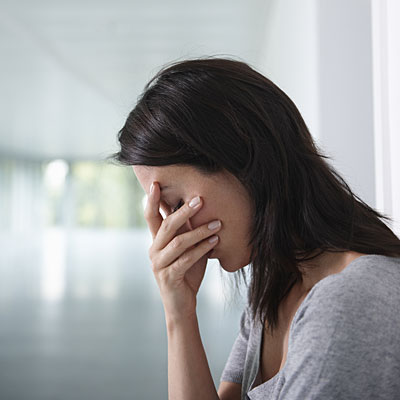A perpetually pessimistic friend once told me that my birthday (later this month for you gift givers out there) was the most depressing day of the year because it’s cold, dark, and the holiday bills arrive. While there may be some credence to this idea, there’s a bit more biology to the story, which involves a biochemical imbalance related to less exposure to natural light during the winter. Specifically, as days become shorter, our brains produce more melatonin (which aids sleep) and, in turn, less serotonin (which contributes to the regulation of mood). The result is a drop in mood and an increase in anxiety. Sometimes, it’s the mild winter blues, but sometimes it’s a more serious condition known as seasonal affective disorder (SAD).
If you have experienced the following symptoms for at least the past couple of winters, with remission in the summer months, you may be suffering from SAD: depressed mood most of the day, every day; diminished pleasure in previously enjoyable activities; significant cravings for starchy or sweet foods; fatigue or loss of energy every day; desire to sleep most of the day; anxiety and agitation; feelings of worthlessness or inappropriate guilt nearly every day; social irritability and/or withdrawal; decreased sex drive; diminished ability to concentrate; and hopelessness.
While it’s important to get a professional evaluation to rule out any physical ailments, including a drop in your vitamin D levels, there are ways to cope with these feelings. Depending on the severity of your symptoms, you may find relief from a variety of strategies such as:
1. Exercise daily – any type, any amount.
2. Bask in the sunshine, at least thirty minutes a day. If sunshine is not an option, use light therapy. You can purchase full-spectrum light bulbs or a light box to get a few extra rays and improve mood, energy, and concentration.
3. Limit sugar, alcohol, and caffeine. Veggies, especially leafy greens, go far in reducing cravings.
4. Spend time with friends – maybe while exercising, and in the sun. (Hey, just a suggestion!)
5. Journal five points of gratitude daily. Finding the silver lining decreases depression.
6. Focus on your breathing or a candle or a color, or whatever can keep you in the moment. Just aspire to be.
7. Try a new hobby or activity. Here’s your chance to take up a musical instrument, volunteer, try pottery, cooking, yoga, or rock-climbing – anything to get your oxygen flowing.
8. Embrace some healing hibernation without guilt and honor your need to rest. This may include curling up with a book, sleeping, taking a bubble bath, or staying cozy by the fire. Sleep is especially vital to mood regulation.
9. Seek cognitive behavioral therapy (CBT) if there is a more severe impact on your functioning. Processing your thoughts and emotions with a caring, empathic, and objective person can do wonders. Therapy can help you develop personal strategies for coping with your anxiety and depression as well as help you learn to connect your thoughts with your feelings in an effort to regulate your emotions.
10. Last but not least, medication is sometimes needed. If your symptoms are persistent and severe, it is important to address the biochemical imbalance in your brain. Medications are sometimes necessary to stabilize moods and lessen anxiety.
Anything that brings a light and warmth to your winter days is a good strategy. In addition to the ideas listed, I like to extend my winter joy by keeping our holiday lights up for my birthday, the Super Bowl, Chinese New Year, and sometimes even Mardi Gras – but never past Fat Tuesday!




